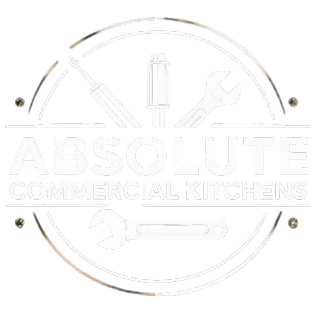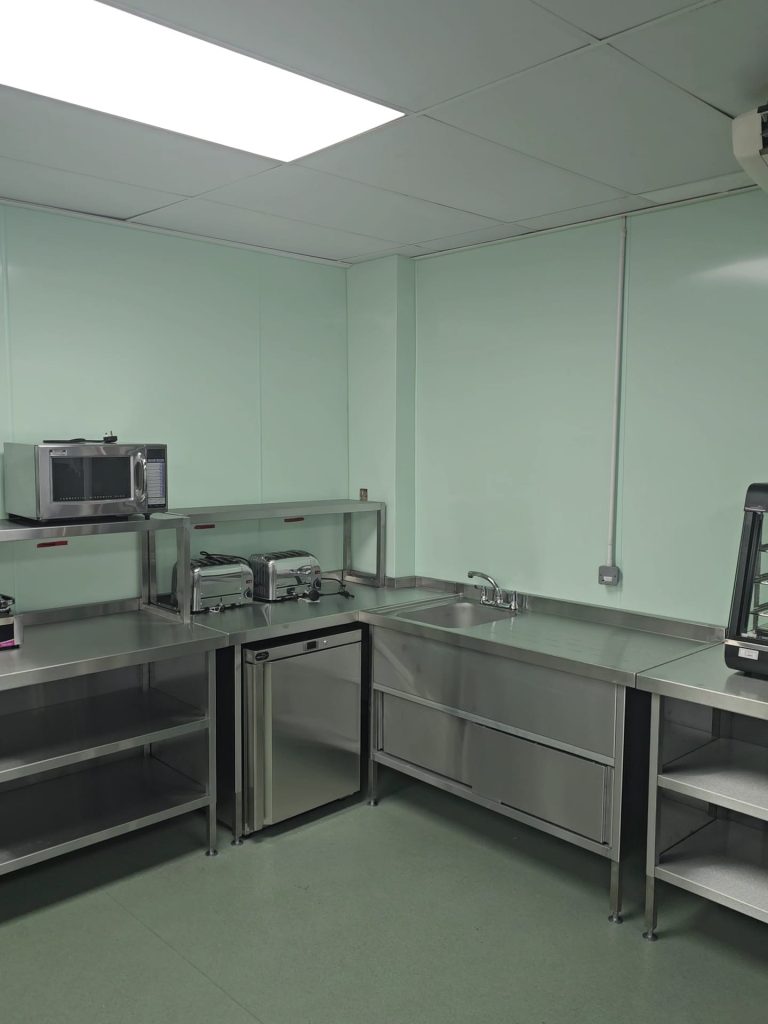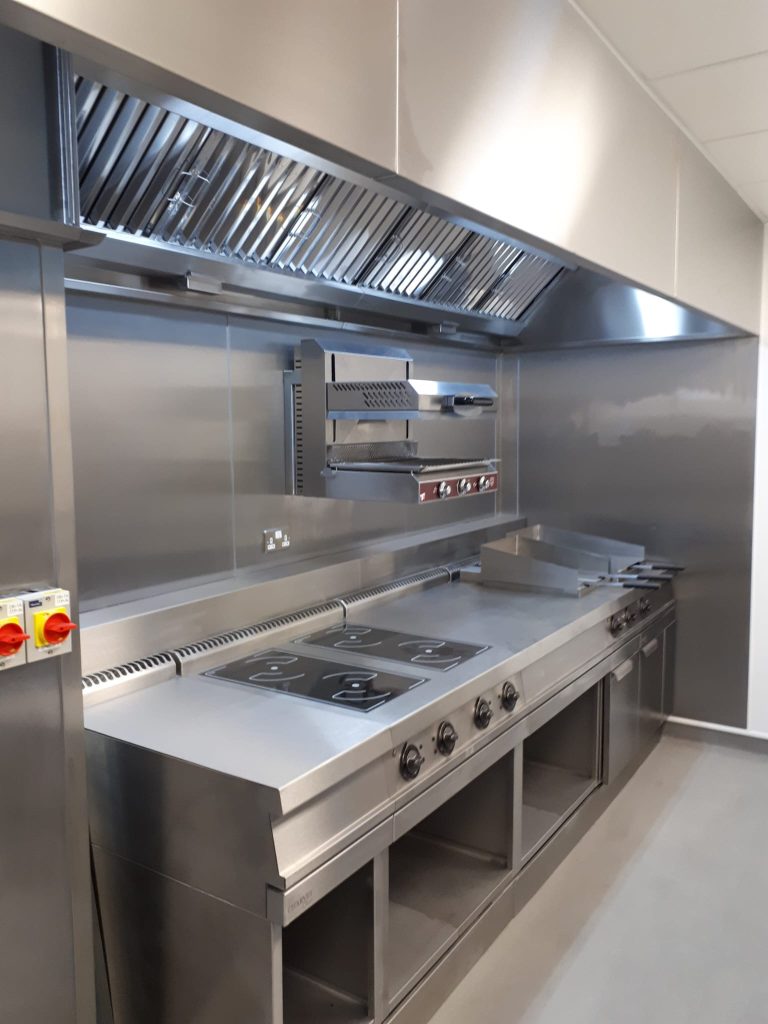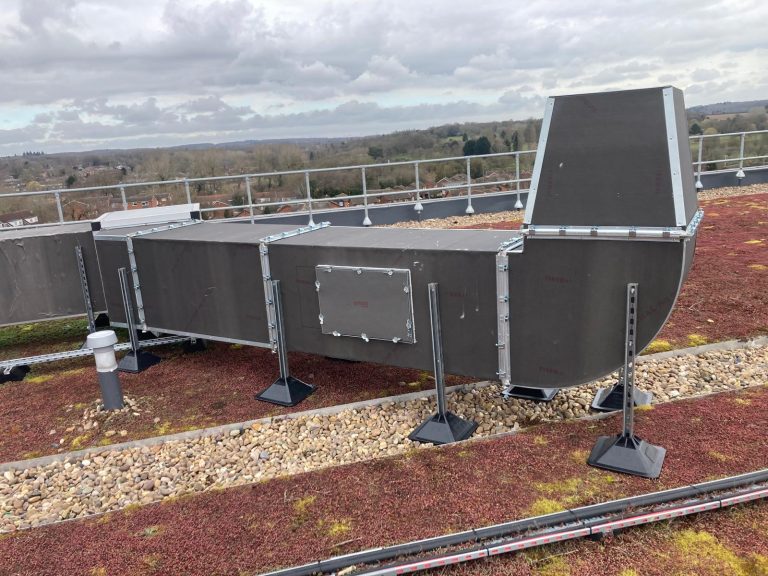Running a commercial kitchen comes with many responsibilities, and one of the most important is ensuring you have the right ventilation system in place. From meeting UK regulations to protecting staff and customers, commercial ventilation is essential for safety, compliance, and efficiency.
This guide explains everything you need to know as a business owner or new operator—from requirements and costs to the different types of ventilation systems available.
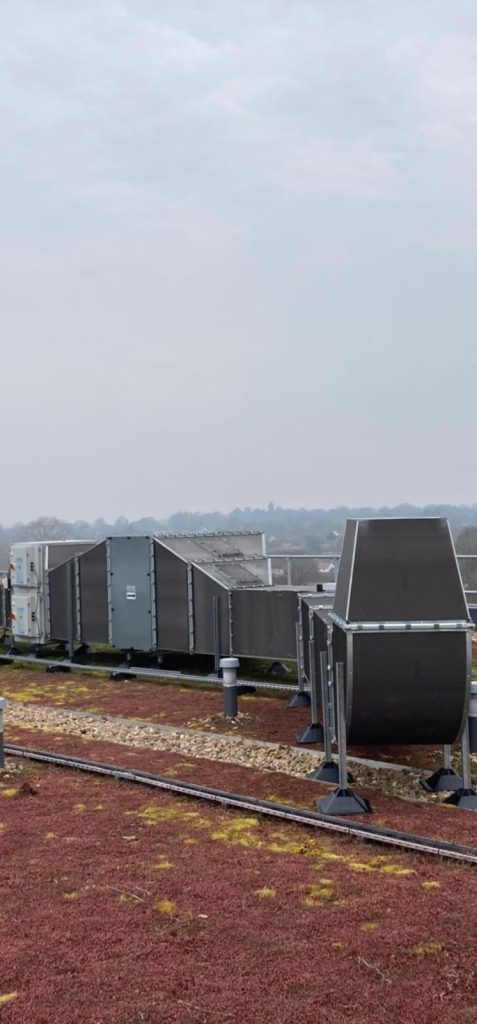
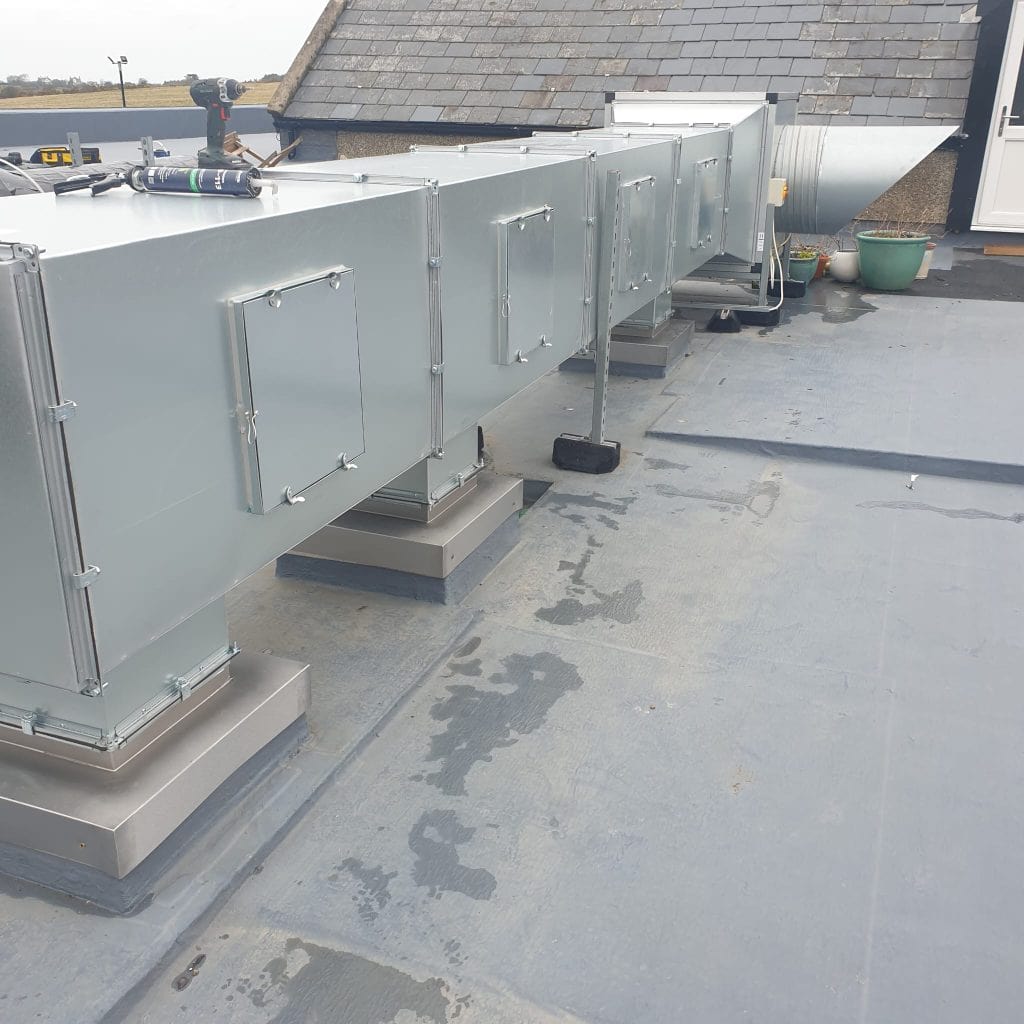
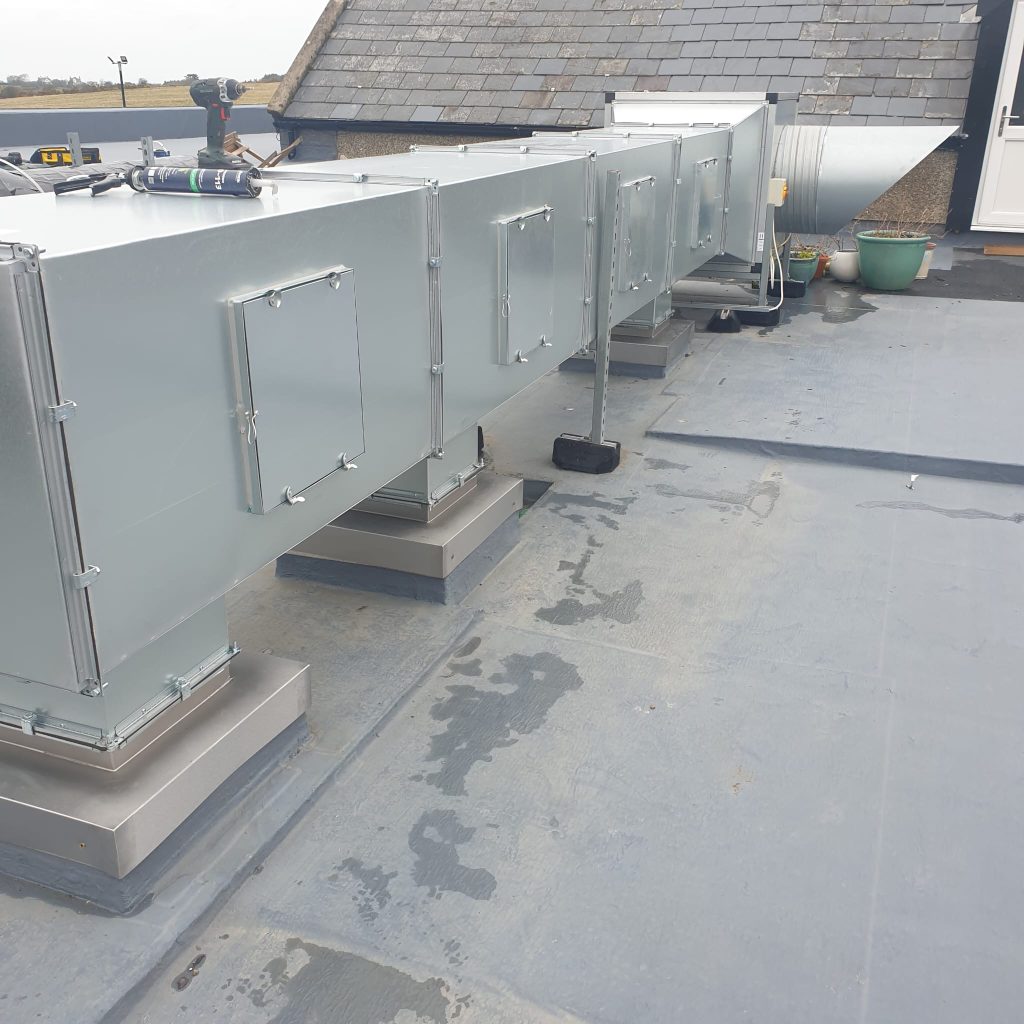
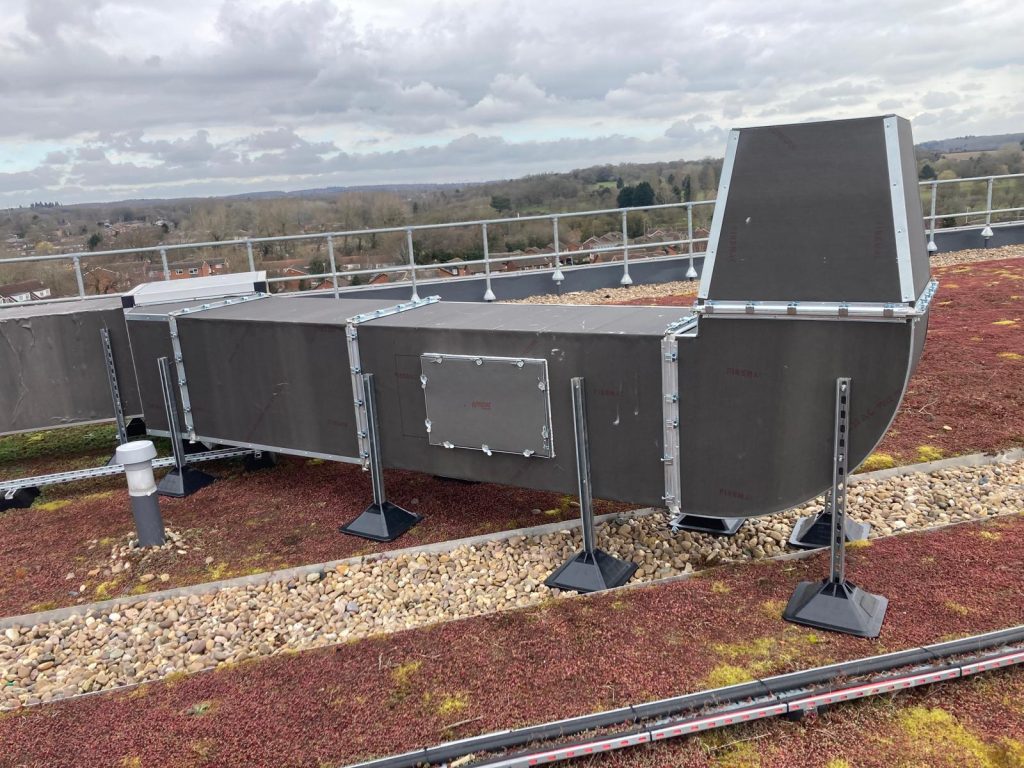
What Are the Requirements for Commercial Ventilation in the UK?
In the UK, commercial kitchens must comply with strict health and safety, building, and fire regulations. The key requirements include:
- The Workplace (Health, Safety and Welfare) Regulations 1992 – Every enclosed workplace, including kitchens, must have suitable and effective ventilation.
- The Health and Safety at Work etc. Act 1974 – Employers must provide safe working conditions, which includes maintaining safe air quality.
- Gas Safety (Installation and Use) Regulations 1998 – Kitchens using gas appliances may require a flue system to safely remove smoke, vapour, and heat.
- Building Regulations Part F (Ventilation) – Defines the ventilation types required (whole building, local extract, purge) and sets airflow testing requirements.
Other important frameworks include Building Regulations Part B (Fire Safety), which requires fire-rated ductwork and fire risk assessments, and hygiene law under the Food Safety Act 1990, enforced by local environmental health officers.
What Ventilation Is Required in a Commercial Kitchen?
Commercial kitchens must have ventilation systems that:
- Extract heat, steam, grease, and odours at source, typically via extractor hoods or canopies.
- Provide enough combustion air to gas appliances to prevent dangerous carbon monoxide build-up.
- Use fire-rated ducting to reduce fire risk and comply with UK fire safety legislation.
- Ensure equipment is easy to clean, reducing grease build-up that can become a fire hazard.
Commercial ventilation installation should always be carried out by accredited professionals who understand these requirements like Absolute Commercial Kitchens.
What Are the Four Types of Ventilation?
According to UK Building Regulations Part F, there are four main types of ventilation systems. Each plays a different role in maintaining air quality, removing contaminants, and ensuring comfort and safety in the workplace:
- Whole-building (background) ventilation
This provides a continuous supply of fresh air throughout the entire building. In a commercial kitchen setting, background ventilation usually comes in the form of trickle vents or air bricks. While it doesn’t handle high levels of smoke or steam on its own, it creates a steady flow of air that prevents stagnation and maintains a healthy baseline environment. - Local extract ventilation
This is the most important system for kitchens, as it removes pollutants, fumes, and grease-laden vapours directly at their source. Typical examples include canopy hoods, extractor fans, and grease filters. Local extraction is crucial for protecting staff health, maintaining hygiene standards, and preventing fire risks caused by grease build-up in the air and ducting. - Purge (rapid) ventilation
Designed to quickly refresh the air within a space, purge ventilation can be as simple as opening windows or using dedicated mechanical systems to create a fast air change. While it’s not a primary method for day-to-day kitchen ventilation, it is often required in building regulations to deal with emergency scenarios (for example, smoke build-up) or to clear the air after intense cooking sessions. - Mechanical supply and extract with heat recovery
The most advanced and energy-efficient option, these systems use fans to supply fresh air and extract stale air simultaneously, while recovering heat energy from the extracted air. In a commercial kitchen, this type of system not only ensures effective air quality but also helps reduce energy costs by recycling otherwise wasted heat—a major advantage for businesses looking to improve efficiency and sustainability.
For most commercial kitchens, a combination of local extract ventilation (to remove grease, steam, and odours at the source) and mechanical supply systems (to ensure a constant flow of fresh, filtered air) is the most effective and compliant solution. This approach balances safety, energy efficiency, and comfort, while meeting the strict requirements set out by UK regulations.
How Much Does It Cost to Install a Ventilation System in the UK?
The cost of installing a commercial ventilation system depends on kitchen size, complexity, and regulatory requirements.
- A basic extractor fan system can start from around £450 + VAT.
- A bespoke commercial kitchen extraction system typically starts at £999 + VAT.
- A full commercial kitchen build-out, including ventilation, can range from £30,000 to £150,000.
Ongoing cleaning and maintenance costs must also be factored in, as they are essential for both compliance and fire safety.
Accreditations and Certifications Needed
When installing or upgrading your commercial kitchen ventilation, always check that your contractor has the right qualifications and certifications:
- Gas Safe registration – Essential for any installation involving gas appliances.
- CIBSE or HVAC industry body certification – Demonstrates professionalism and technical expertise.
- Building Regulations Part F compliance certificates – Proof of proper testing and commissioning.
- Fire-rated ducting certification – Ensures your system complies with fire safety law.
You can learn more about our fire rated ducting services here.
Government Regulations Overview
To summarise, the key regulations you must comply with are:
- Building Regulations Part F – Ventilation strategies and performance testing.
- Workplace Health & Safety Regulations – General requirements for safe air quality.
- Gas Safety Regulations – Safe installation of appliances and flues.
- Food Safety Act 1990 – Hygiene and environmental health standards.
- Fire Safety Regulations – Fire-rated ducting and fire risk assessments.
Investing in the right commercial ventilation system isn’t just about ticking compliance boxes—it’s about creating a safe, efficient, and comfortable environment for staff and customers alike. By working with accredited professionals and keeping up with maintenance, you’ll protect your business, reduce risks, and ensure your kitchen operates at the highest standard.
For more details on our services, explore:
